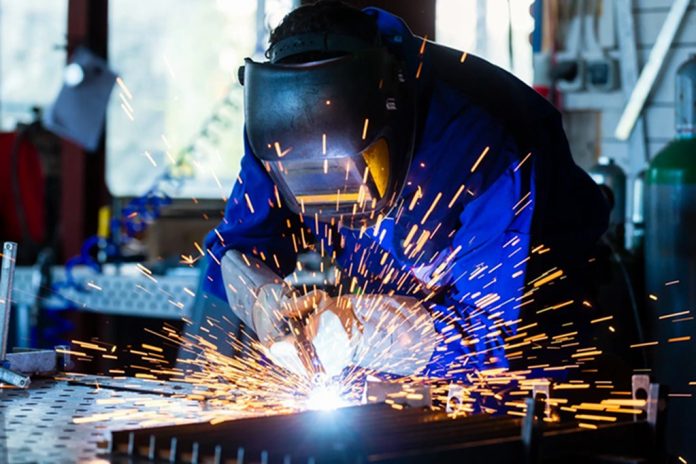The manufacturing industry continues to evolve at a rapid speed. In a post-pandemic landscape, automation has become the new food for thought for business leaders looking to speed up their supply chain processes.
With a post-pandemic e-commerce boom, and experts predicting that global online spending will reach $270 billion by 2025, both import, export and manufacturing demands have skyrocketed. As more companies continue to use online platforms to reach a global consumer network, it is no surprise that supply chain efficiency has come into the limelight.
Enter digitalisation. Like every other sector post-pandemic, Covid-19’s digital shift has affected the manufacturing industry too. From AI-automation to blockchain-based data transactions, the manufacturing industry is using technology to streamline its processes.
One notable technology that is beginning to stand out amongst industry giants is the use of immersive tech. AR and VR are set to revolutionise supply chain efficiency, equipment maintenance and employee training, proving to provide the manufacturing industry with some of its biggest opportunities to date.
In fact, recent research from PwC has predicted that the use of augmented reality alone in product and service development could account for a $360 billion GDP boost by 2030.
However, one in four manufacturers is still unsure about the potential of this immersive aid. Let’s have a closer look into AR’s impact on the manufacturing industry, and delve into what the world can expect from augmented reality post-pandemic.
Speeding Up The Supply Chain
One of the more notable impacts of the Covid-19 pandemic is the increasing pressure on supply chain speed. As the e-commerce industry grows, and a global consumer demographic continues to demand faster shipping times, supply chain efficiency has become vital, if businesses want to keep their customer retention high.
Introducing immersive technology into the supply chain process is an easy way to address heightened consumer demand and streamline the manufacturing chain from production to exports.
AR can enhance the manufacturing process by providing workers with digital layering that can identify supply chain faults, aid operators in finding assets and improve employee confidence and accuracy while moving at great speeds to meet customer demands.
Using AR and VR applications, the speed of the assembly process is boosted by 30%, while also ensuring accuracy within all stages of the production process.
Vineesh Kapoor, Product Management Director at Emerson Automation Solutions believes that the adoption of immersive tech within the manufacturing industry is key if business leaders want to meet consumer demand.
“AR helps users to achieve faster upskilling and creates more confident workers by standardizing procedure execution and providing in-the-field training,” he comments. “Augmented reality can help operators and technicians find assets quickly and easily, a difficult task when they must identify one device out of hundreds or thousands,”
As augmented reality aims to identify supply chain issues in real-time, workers are able to tend to them quickly and efficiently without interfering in the production process and damaging their KPIs.
Improving Equipment Maintenance
So how is augmented reality used in the manufacturing stage? In order for the supply chain to remain efficient, equipment maintenance has become a priority for manufacturers looking to keep their production process moving at record speeds.
Immersive technology continues to solve issues related to equipment maintenance. Solving a problem that would have once put the production line out of action for a number of days in a number of hours, technicians are now able to use mixed reality headgear to find the root cause of equipment failures and examine all parts of the machine while also digitally viewing images and instructions in real-time in order to fix the problem.
This eliminates the need for physical intervention and reduces the time consulting paper-based instruction manuals. In fact, AR’s digital layering features can even chronologically guide an operator with little experience, providing remote support from the original equipment manufacturer completely within the mixed reality headset.
Training The Manufacturers Of Tomorrow
AR and VR’s ability to improve staff training could be the most important benefit of implementing the technology into the manufacturing industry.
Using popular AR and VR training providers on the market, new employees can be quickly immersed within their role and can be trained using immersive, digital recreations of potential issues they may face within the job.
This can reduce the risk of uncertainties and improve safety remotely when handling complex, dangerous operations. For example, inexperienced engineers can utilise AR’s digital layering to assist the operation of a piece of equipment they are unfamiliar with, using the device to display machine data and virtual guides that can walk them through the process without human intervention.
This can save business leaders a hefty sum on staffing costs and training, which can be redirected into further streamlining the supply chain to meet heightened demand.
According to experts from Mesmerise VR, “the time spent on the training process for new team members will easily be stripped down with VR. Whether this is in preparation for an in-person position or used as a tool to maintain a virtual one, VR will increase confidence and understanding within your company.”
As we step into the future of manufacturing, we have only scratched the surface of AR’s potential. As the e-commerce industry continues to grow, it won’t be long before the manufacturing process becomes a completely digital process.







